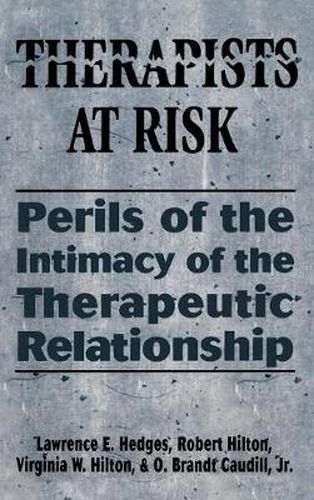Readings Newsletter
Become a Readings Member to make your shopping experience even easier.
Sign in or sign up for free!
You’re not far away from qualifying for FREE standard shipping within Australia
You’ve qualified for FREE standard shipping within Australia
The cart is loading…






Therapists are at risk, and the risk is increasing. Well-meaning practitioners used to believe that if they were adhering to ethical codes, and doing their best, they didn’t have to worry about being sued or brought before a licensing board. But numerous well-publicized cases, and even more settled outside the limelight of the press have changed all that. Therapists are now worried, and rightfully so. And all of this has happened at the same time that therapists are learning better ways to help very troubled patients who have often been severely abused and traumatized. Though these patients often require less rigid and more personal and creative approaches that may deviate from some proposed norm, they are also most often those who threaten legal action against their therapists. How does one engage intensely with these patients without being drawn into potentially destructive countertransference enactments? How does one remain a creative, spontaneous and helpful therapist while avoiding being pulled into a voracious and inhuman legal system? These are a few of the important questions addressed by this book.
$9.00 standard shipping within Australia
FREE standard shipping within Australia for orders over $100.00
Express & International shipping calculated at checkout
Therapists are at risk, and the risk is increasing. Well-meaning practitioners used to believe that if they were adhering to ethical codes, and doing their best, they didn’t have to worry about being sued or brought before a licensing board. But numerous well-publicized cases, and even more settled outside the limelight of the press have changed all that. Therapists are now worried, and rightfully so. And all of this has happened at the same time that therapists are learning better ways to help very troubled patients who have often been severely abused and traumatized. Though these patients often require less rigid and more personal and creative approaches that may deviate from some proposed norm, they are also most often those who threaten legal action against their therapists. How does one engage intensely with these patients without being drawn into potentially destructive countertransference enactments? How does one remain a creative, spontaneous and helpful therapist while avoiding being pulled into a voracious and inhuman legal system? These are a few of the important questions addressed by this book.